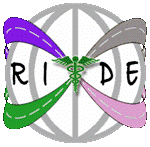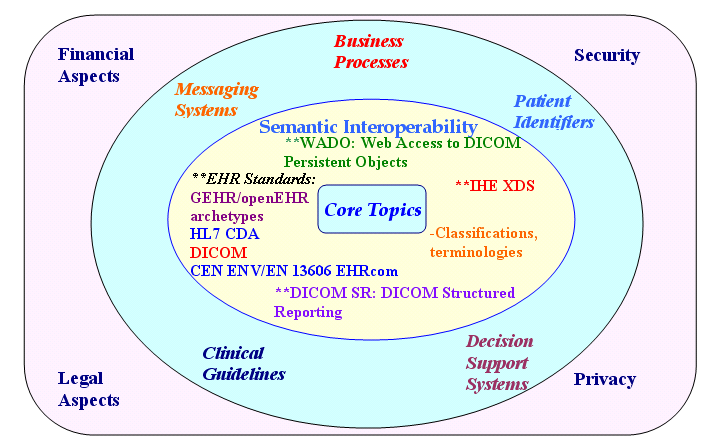January 2006–December 2007

#1. Project description
RIDE is a roadmap project for interoperability of eHealth systems leading to recommendations for actions and to preparatory actions at the European level.
This roadmap will prepare the ground for future actions as envisioned in the action plan of the eHealth Communication COM 356 by coordinating various efforts on eHealth interoperability in member states and the associated states. Since it is not realistic to expect to have a single universally accepted clinical data model that will be adhered to all over the Europe and that the clinical practice, terminology systems and EHR systems are all a long way from such a complete harmonization; the RIDE project will address the interoperability of eHealth systems with special emphasis on semantic interoperability.
In order to create RIDE Roadmap, first the European best practices in providing semantic interoperability for eHealth domain will be assessed and the quantified requirements to create a valid roadmap will be identified.
Based on these requirements, the goals, and the economical, legal, financial and technological challenges of the industry for the 21st century for achieving interoperability in eHealth solutions will be elaborated. RIDE will also focus on the limitations of the policies and strategies currently used in deploying interoperable eHealth solutions.
A research portal for sharing resources addressing semantic interoperability in eHealth domain will be created and maintained; the key actors and stakeholders will be coordinated around RIDE special interest groups to create a wide consensus at the European level.
Through eight RIDE workshops a shared vision for building a Europe-wide semantically interoperable eHealth infrastructure will be created. After assessing the gaps between the “as-is” situation and the “to-be” eHealth vision, the emerging trends and opportunities to achieve the vision statement, the required advances in the state of the art research, technology and standards will be identified. While creating RIDE Roadmaps the use of Open Source solutions will be preferred.
The project partners are:
- Middle East Technical University, Software Development and Research Center(Turkey)
- OFFIS e.V. Healthcare Information and Communication Systems(Germany)
- Saarland University -Institute for Formal Ontology and Medical Information Science (Germany)
- European Institute for Health Records (France)
- National Council for Research, Institute for Biomedical Technology (Italy)
- National Technical University of Athens, Institute of Communication and Computer Systems(Greece)
- National University of Ireland, Digital Enterprise Research Institute(Ireland)
- IHE-D e. V., Integrating the Healthcare Enterprise – Deutschland (Germany)
- Office Line Engineering NV (Belgium)
Implementation Plan of the RIDE Roadmap
##Introduction
RIDE project’s main objective is to provide a roadmap to prepare the ground to support activities in the context of the action plan of the eHealth Communication COM (2004) 356, namely “eHealth – Making Healthcare Better for European Citizens: An Action Plan for a European e-Health Area”. This will be facilitated as a result of coordinating the relevant ongoing research and development activities in semantic interoperability in the eHealth domain. The following steps are proposed in RIDE project:
- Elaborating a state of the art research and user requirements in eHealth interoperability
- Elaborating the goals and economical, legal, financial and technological challenges for interoperability in eHealth
- Elaborating the limitations of the current policies and strategies for deploying eHealth solutions in clinical settings
- Defining a vision for a Europe-wide semantically interoperable eHealth infrastructure for the next ten years
- Proposing a strategic roadmap to the European Commission to achieve this vision
- Disseminating the results of the project and creating a wide consensus at the European level for semantic interoperability in the eHealth domain
To achieve the multiple tasks, the workplan is divided into five workpackages as presented in Table 1.
The work packages have been broken down according to types of activities: co-ordination activities and management activities. WP1 “Project Management” and WP5 “Dissemination” are grouped under Management activities and WP2, WP3, WP4 are grouped under Coordination activities. WP3 and WP4 will be run in an iterative manner, to give feedback till the developed Roadmaps become mature, as detailed in Section 7.1.3 Project Phasing. A brief introduction to workpackages is presented in the following sections. The detailed elaboration including the task descriptions will be presented in Section 7.4 Workpackage List.
| WP# | Workpackage Name | |
|---|---|---|
| Management Activities | WP1 | Project Management |
| WP5 | Dissemination | |
| CoordinationActivities | WP2 | Identifying State of the Art Technologies, Standards and Research |
| WP3 | Identifying goals, challenges and the vision for achieving semantic interoperability in eHealth |
|
| WP4 | Building a Roadmap for an interoperable eHealth Framework |
Table 1 RIDE Workpackages
##Coordination activities
The coordination activities are tightly coupled with each other as depicted in Figure 1. The descriptions of these activities including their relationships are elaborated in the following sections:

##Figure 1 Coordination Activities in RIDE
##Identifying the State of the Art Technologies, Standards and Research
In WP2 of RIDE project a state of the art analysis of the interoperability of eHealth systems will be realized. This task will seek to provide an overview of best practices and standardization efforts in Europe regarding interoperability of eHealth systems. The main objective of this state of the art report is to provide input to WP3 and WP4 to facilitate the roadmapping process. Additionally within the scope of this workpackage, a requirements analysis of the interoperability of the eHealth systems will be provided. This requirement analysis will be collected through analysis of real life scenarios in the eHealth domain and meta-analysis of papers and reports already published. That involves less work The topics to be addressed include:
- Electronic Healthcare Record Standards
- The GEHR/openEHR initiative
- CEN ENV/EN 13606 EHRcom
- HL7 Clinical Document Architecture (CDA)
- DICOM
- Web Access to DICOM Persistent Objects
- DICOM Structured Reporting
- Integrating the Healthcare Enterprise (IHE)
- IHE Cross-Enterprise Document Sharing (XDS)
- Classification Standards and Coding Schemes
- International Statistical Classification of Diseases (ICD)
- International Classification of Primary Care (ICPC)
- Systemized Nomenclature of Medicine (SNOMED)
- Logical Observation Identifiers Names and Codes (LOINC)
- Unified Medical Language System (UMLS)
- The results og GALEN and GALEN-IN-USE projects
- The Additional topics to be addressed in relation to interoperability of eHealth systems
- Patient Identifiers
- Healthcare Business Processes
- Clinical Decision Support Systems
- Clinical Guidelines
- Security, Privacy and Legal Issues
- Semantic Interoperability
- Ontologies
- Semantic Web Initiative and the Web Ontology Language (OWL)
- Semantic mediation
##Identifying goals, challenges and the vision for achieving semantic interoperability in eHealth
WP3 will produce collected, synthesized and structured goals and the economical, legal, financial and technological challenges of the eHealth industry for the 21st century with focus on interoperable eHealth solutions in Europe. The goals and industrial challenges will be synchronized and complemented with the industrial requirements and scenarios derived in WP2. These goals and challenges are vital for creating a roadmap for an interoperable eHealth Communication infrastructure. As a second task, based on these goals and challenges, a common vision for a Europe wide interoperable eHealth communication infrastructure will be prepared. These visions will be fed as input to the roadmap to be developed in WP4, and the visions will be mapped towards refined, concrete solutions to be reported as a roadmap.
The industrial challenges, goals and the vision for interoperable eHealth solutions will be gathered through a systematic process. Each partner will collect information from the major stakeholders in eHealth domain through a common analysis template. These stake holders include:
- Healthcare Informatics Standardization Bodies
- Healthcare Institutes
- Major Healthcare Informatics Solution providers
- ICT Vendors and Consultants
- Research and Academia
The process of gathering these analysis results will also be facilitated by the Project Portal. Then these collected reports will be analyzed and harmonized to contribute to creating a common vision for the future interoperable eHealth solutions.
##Building a Roadmap for an interoperable eHealth Framework
Within the scope of RIDE project, a reference framework will be provided as a roadmap to realize the vision statements created in WP3.
As a first step, the gap between the vision statement including the industrial goal and challenges in eHealth domain (provided as a result of WP3) and the state of the art technology and practices in eHealth domain (provided as a result of WP2) will be analyzed. The gap analysis will identify the missing pieces in research, technology and standardization to achieve semantic interoperability in eHealth domain with the objective of deducing roadmaps.
After analyzing the gaps, the required advances in research, technologies and standards compared to the current state of the art in research and technology will be identified to reach the status described in the vision and goal scenario produced in WP3. These will be reported as “Trends and Opportunities” to achieve the vision statement.
RIDE project will not only focus on technological limitations and challenges but will try to identify the limitations of the policies and strategies currently used in deploying eHealth solutions in clinical settings. A comparative analysis of strategies in different jurisdictions (e.g. NPfIT in England, ONCHIT in US, Infoway in Canada, OpenConnect in Australia, the RHIOs in US, etc) will be performed. The limitations of the processes currently used will be elaborated to identify ways to improve the effectiveness of deployment, and to obtain “a realistic approach and applicability” in clinical settings. The non-technological factors, i.e. issues on regulations, education, economics, involvement of stakeholders, and role of public agencies to support the deployment and the research, ways to involve the research community (increase awareness) will be investigated. A criteria to develop a plan for the deployment, the processes of change management; potential role of authorities will be elaborated that could satisfy the EU Action Plan and will be provided as an input to the roadmapping process.
Based on these, roadmaps will be created elaborating how to realize the vision and user requirements with the advances in the current Research, Technology and Standards. The roadmaps for semantic interoperability in eHealth domain will cover the sub-domains such as semantic interoperability in Electronic Healthcare records, patient identifiers, eHealth messaging systems, Clinical guidelines and eHealth Business processes as presented in Figure 2. While deriving these roadmaps, the financial and legal aspects as well as security and privacy challenges will be taken into account.
The benefits of the roadmaps to be defined can be summarized as:
- To contribute developing a Europe wide consensus about a set of needs and the technologies required to achieve semantic interoperability in eHealth domain.
- To provide a reference framework to help plan and coordinate developments both within a member state and in European level to achieve semantic interoperability in eHealth.
- To provide information about the expected and planned future development of products and solutions. With this information investment decisions concerning the future research activities can be taken in eHealth in Europe.
The roadmap definitions will include:
- Business implementation paths to enable European industry to set up and follow a strategy for future product creation procedures based on innovative technologies and to be competitive in international markets.
- Concrete research tasks for RTD for the research institutes and academia.

Figure 2 RIDE Roadmap target topics
Management Activities
###Project Management
The management of RIDE project is organized according to three perspectives:
- Administrative management and quality, financial, and strategic direction of the project,
- Operational management of the project network, including the Special Interest Groups to be created in Project Portal and the European Expertise Group
- Strategic management in order to promote the project to industrial partners, keep the project focus to industrial needs, and look for strategic agreements with other EU projects or related technology providers
This work package will perform the following tasks:
- To follow the detailed workplan
- To prepare action plans for the consortium
- To plan, organize and to follow-up various events in order to meet the objectives of the project
- To elaborate the project quality measures, and assure the quality of project deliverables
- To ensure the cross work package cooperation
- To evaluate the progress of the work
- To organize and report about project meetings
- To act as an interface to the Commission on all issues concerning the project.
###Dissemination
Within workpackage 5, RIDE project’s results will be disseminated in order to create a wide consensus at the European level for semantic interoperability in eHealth domain. For this purpose a portal will be created enabling the exchange of ideas. Each intermediate result of the project, such as goals, economical, legal, financial and technological challenges for semantic interoperability in eHealth, and vision statements will be presented in this portal and will be opened to the discussion of external experts in the eHealth domain. Additionally this portal will facilitate the collection of ideas on challenges and visions for semantic interoperability in eHealth domain from a wider audience.
Through this portal, special interest groups (SIGs) will be created for RIDE research areas such as semantic interoperability in Electronic Healthcare records, patient identifiers, eHealth messaging systems, Clinical guidelines and eHealth Business processes. Around these SIGs, an extended database of interested people will be developed and maintained, and a research community will be created.
A section in RIDE portal will be dedicated to the workshop and conference calls in eHealth. After each Roadmap release, RIDE project itself will organize workshops on semantic interoperability in eHealth domain to disseminate the RIDE Roadmaps in conjunction with the meetings of eHealth Working Group of European Commission. These workshops will both facilitate the dissemination of project results, and also will provide feedback from external experts about the challenges and visions for semantic interoperability problem in eHealth domain. RIDE project aims to organize these workshops in conjunction with prestigious European conferences such as IST event and eChallenges to make best possible use of the resources since such conferences already attract quite a number of participants from all over Europe.
RIDE project’s dissemination will especially address standardization bodies. Project’s early results will be closely discussed with standardization bodies, and necessary extensions in the standardization efforts will be provided as proposals to the standardization bodies. In particular, project results will be disseminated through OASIS International Healthcare Continuum Technical Committee, HL7, CEN TC 251 and CEN/ISSS.

